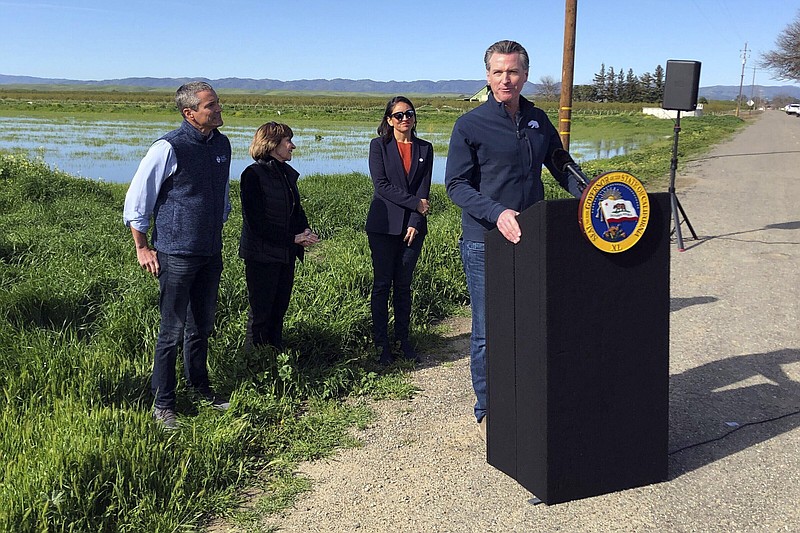DUNNIGAN, Calif. -- California Gov. Gavin Newsom ended some of the state's water restrictions on Friday because a winter of relentless rain and snow has replenished the state's reservoirs and eased fears of a shortage after three years of severe drought.
Most of California is no longer in a drought, according to an update by the U.S. Drought Monitor on Thursday. But water shortage concerns remain for some areas of the state, including the Klamath River basin along the California-Oregon border and in Southern California, which relies on the struggling Colorado River system to help supply millions of people.
"Are we out of a drought? Mostly -- but not completely," Newsom said Friday from a farm northwest of Sacramento that has flooded its fields to help replenish groundwater.
Newsom on Friday stopped asking people to voluntarily cut their water use by 15%, a request he first made nearly two years ago while standing at the edge of a nearly dry Lopez Lake in the state's Central Coast region -- a lake that today is so full from recent storms it is almost spilling over. Californians never met Newsom's call for that level of conservation -- as of January the cumulative savings were just 6.2%.
The governor also said he would ease rules requiring local water agencies to impose restrictions on customers. That order will impact people in different ways depending on where they live. For most people, it means they won't be limited to watering their lawns on only certain days of the week or at certain times of the day. Other restrictions remain in place, including a ban on watering decorative grass for businesses.
Newsom could ease those restrictions in part because state officials said California's reservoirs are now so full that cities will get more than double the amount of drinking water this year compared to a previous allocation announced last month. Water districts that serve 27 million people will get at least 75% of the water they requested from state supplies. Last year, they only got 5% as California endured three of the driest years ever since modern recordkeeping began in 1896.
"I know that's disappointing for some because it would be nice to have a governor say the drought is over," Newsom said.
California and the western United States have been in an extended drought for about two decades, a period of abnormal dryness punctuated by occasional intense seasons of storms.
"Being the governor of a large, diverse state that has very diverse water supplies and water demands, it's really tough for him to say a drought has started or a drought has ended. Everybody will interpret that a little differently," said Jay Lund, vice director for the Center for Watershed Sciences at the University of California, Davis.
Lund said the drought is over from many perspectives in California, including urban water supply and reservoirs. But it's not over for the state's fragile ecosystems and the groundwater aquifers that were depleted during recent drought years.
"We might never recover them completely," he said.
